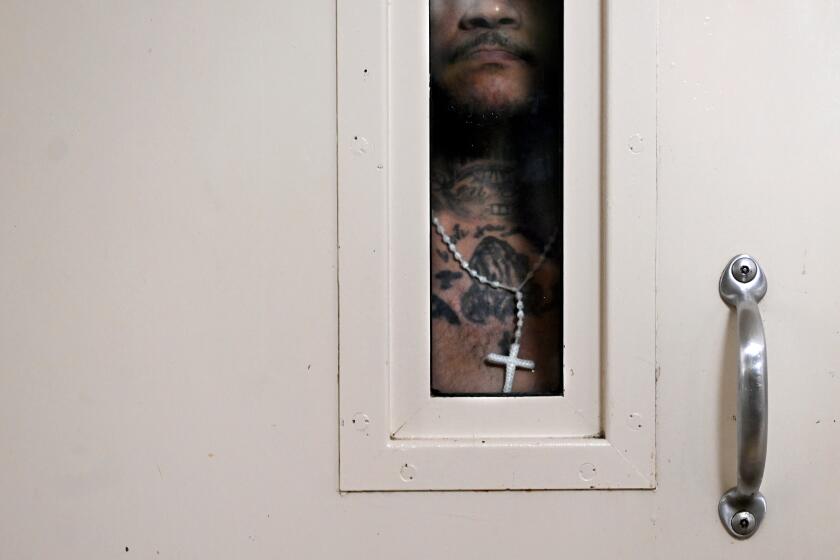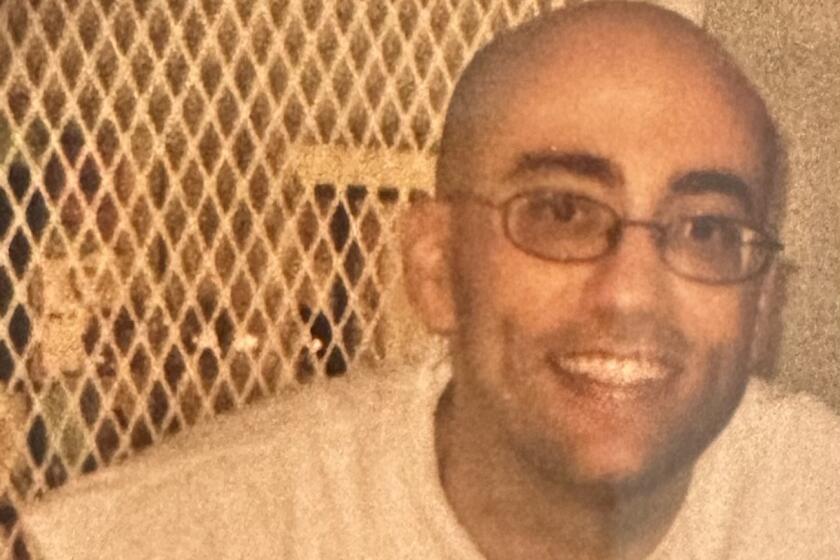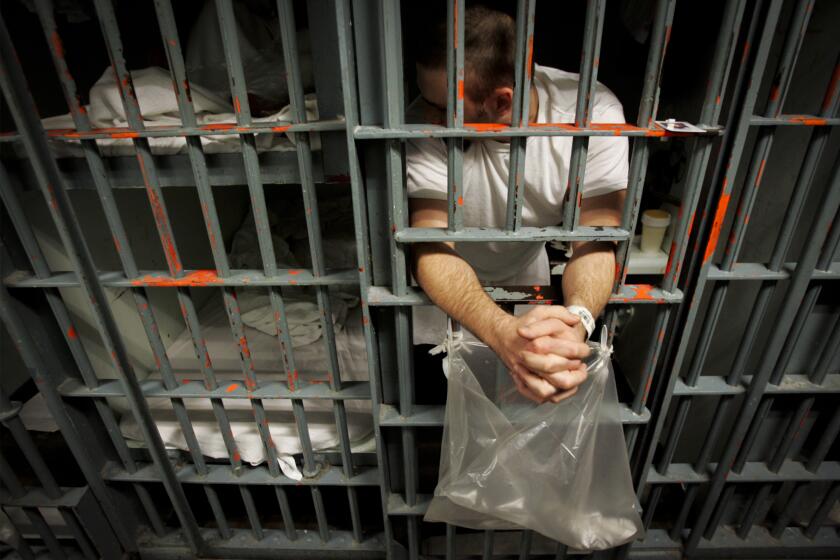He was beaten to death in Menâs Central Jail. It took staff nearly 4 hours to notice

By the time staff at Menâs Central Jail noticed something was wrong, Masoud Rahmati had been dying for nearly four hours. It started with a pre-dawn attack in a shower area, records say, and other inmates eventually dragged the 50-year-old to his bunk. Beaten and bloodied, he lay there for two more hours before help showed up.
By then, it was too late. Just after 9 a.m., paramedics declared Rahmati dead, according to records from the Los Angeles County Sheriffâs Department.
His death in mid-June was one of at least three homicides in the countyâs jails this year. After four years without any recorded inmate-on-inmate killings, county data show that since 2020, the jails have averaged three per year, a figure thatâs risen even as the incarcerated population has decreased.
The persistence of violent deaths behind bars â despite decades of court-ordered monitoring and years of outside oversight â underscores how hard it has been for Los Angeles to fix its troubled jail system.
Sheriffâs Department officials and county prosecutors have declined to provide more details about the circumstances surrounding this yearâs killings, though they have confirmed that inmates are criminally charged in all three cases.
For months before Rahmatiâs death, oversight inspectors had flagged the dorm he was housed in as dangerous for mentally ill people due to crowded conditions and a lack of supervision. Inconsistent safety checks have been a long-standing problem in the local jails, where at least 37 inmates have died this year due to natural causes, suicides, fentanyl overdoses and more.
Asst. Sheriff Sergio Aloma said it was âdifficult to speculateâ why there had been so many deaths, but pointed to the steady flow of detainees through the countyâs seven jails, which see nearly 60,000 bookings each year.
âWe operate the largest jail system in the country,â he said when asked about the apparent supervision problems. âOur staff has literally millions of interactions with our incarcerated population on a yearly basis.â
Jail officials are still investigating Rahmatiâs death, Aloma added, without offering further details. He stressed that the Sheriffâs Department has a âconstitutional obligation for the care and safety of our incarcerated population.â
A bill in the California Legislature would add uniform rules about when solitary confinement can be used in jails.
Before Rahmatiâs latest incarceration, he had struggled with homelessness and mental health problems for years, according to his familyâs attorney, Jeremy Lessem.
âHe had been more or less sleeping on the streets,â Lessem told The Times. âHis brother had been trying to get him food and clothing, and his brother tried to get him to live in his home â but he preferred to live on the streets.â
Records show Rahmati had been in and out of jail and repeatedly deemed mentally incompetent to stand trial.
After he was arrested in December 2022 on allegations of battery, records show, his public defender urged a judge to deem him incompetent once again. Instead, he was sent to a mental health court and ultimately found competent to face the charges. With his case pending, he was housed in a fifth-floor dorm for inmates with mental illnesses.
Earlier this year, the Sybil Brand Commission, a county body tasked with oversight and inspection of the local jails, issued a sweeping report on the conditions behind bars in Los Angeles County. Most of the section on Menâs Central Jail focused on problems in the fifth-floor dorms.
The report said that staff at the jail are required to conduct inspections âmultiple times each hourâ on the fifth floor, and âthus, when this Commission finds poor and degrading conditions in areas under high or medium observation, the presumption is the existence of those conditions is known to custody personnel and therefore attributable to a lack of oversight or supervision.â
The report described âwarehouse-like spacesâ where men live on bunks stacked three-high, âshrouded in sheets or towels for a modicum of privacy.â
Though state law requires that the dorms hold no more than 64 people, the fifth-floor units routinely house nearly 90, according to the commission. Fights are frequent, the report said. It described air circulation and access to hot water as âintermittent.â
It was around 5:30 a.m. on June 13 when three inmates on the fifth floor attacked Rahmati, for reasons that are still unclear. According to an autopsy report that Lessem shared with The Times but that has not been publicly released, three men grabbed Rahmati while he was brushing his teeth in the bathroom, then forced him toward the shower area and began beating him.
Some states have abolished the death penalty. California has a moratorium but holds the most people on death row. Texas, where Murphy is held, has carried out five executions so far this year.
âThat was captured on video, and no one was paying enough attention at the time to notice,â Lessem said.
As the attackers hit and kicked him, Rahmati collapsed â and his assailants continued their attack. Eventually, the three attackers returned to the dorm area, leaving him bruised and battered on the bathroom floor. Around 7 a.m., other inmates brought him out of the shower and put him on his bunk. Itâs not clear from the records whether he was unconscious.
For the next two hours, records show, Rahmati remained in his bunk. At around 9:10 a.m., some inmates flagged down deputies who were making rounds and told them about a âman downâ in one of the bunks.
The three men suspected of attacking Rahmati were charged with murder less than two weeks after his death, though the Sheriffâs Department did not publicly list the death as a homicide for several more weeks.
Lawyers for the accused did not respond or declined to comment for this story. All three men â Jaime Garcia Alfaro, Carlos Morataya and George Adrian Hernandez â face murder charges.
When The Times asked why staff on the fifth floor didnât notice Rahmatiâs condition sooner, department officials said safety checks in those housing areas are supposed to occur every 30 minutes. They didnât specify whether those checks occurred on the morning of the homicide, or explain how the staff failed to spot the attack.
The lack of supervision has been an ongoing problem in the county jails, particularly in Menâs Central, the largest lockup. Earlier this year, The Times reported on a series of leaked surveillance videos that showed staff failing to notice or intervene as inmates fought or attacked each other. In one case, a dozen men stabbed another inmate for roughly 14 minutes before jailers arrived.
In Menâs Central Jail, they say, there is almost always something burning. But there are no smoke alarms where inmates live.
Less than a week after that story was published in June, a similar incident occurred one dorm over. According to Inspector Gen. Max Huntsman, on June 29, several men in a rec room attacked another man for more than 10 minutes. The victim survived, and officials said attempted murder charges had since been filed.
The lack of supervision has also led to other safety hazards. Last month, The Times reported that for several decades, inmates at Menâs Central have been lighting fires in their cells to cook food and heat water. As there are no smoke detectors in the housing areas, it is up to jail staff to spot the blazes and manually pull an alarm. That doesnât always happen, and an oversight inspector who visited the jail in June reported seeing three large fires burning inside cells. The inspector, Mary Veral, said she was âshockedâ and likened Menâs Central Jail to a âThird World country.â
Itâs unclear to what extent lapses in supervision may have played a role in either of the other recorded homicides at the jail this year. One of the men, 37-year-old Andrew Balderrama, died in county custody in May, though officials have not said how he was killed. The other victim, 51-year-old Joseph Hutchinson, was stabbed to death in August in Menâs Central Jail, an incident that The Times previously reported could represent fallout from the prison yard killing of a powerful Mexican Mafia member.
Lawyers for the men charged in the killings of Balderrama and Hutchinson did not respond to requests for comment.
More to Read
Sign up for Essential California
The most important California stories and recommendations in your inbox every morning.
You may occasionally receive promotional content from the Los Angeles Times.














